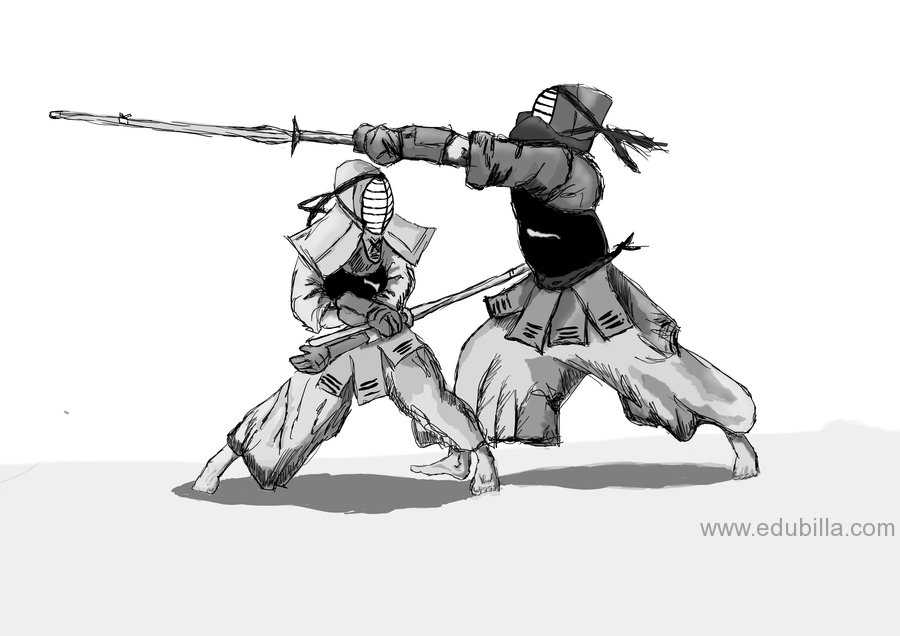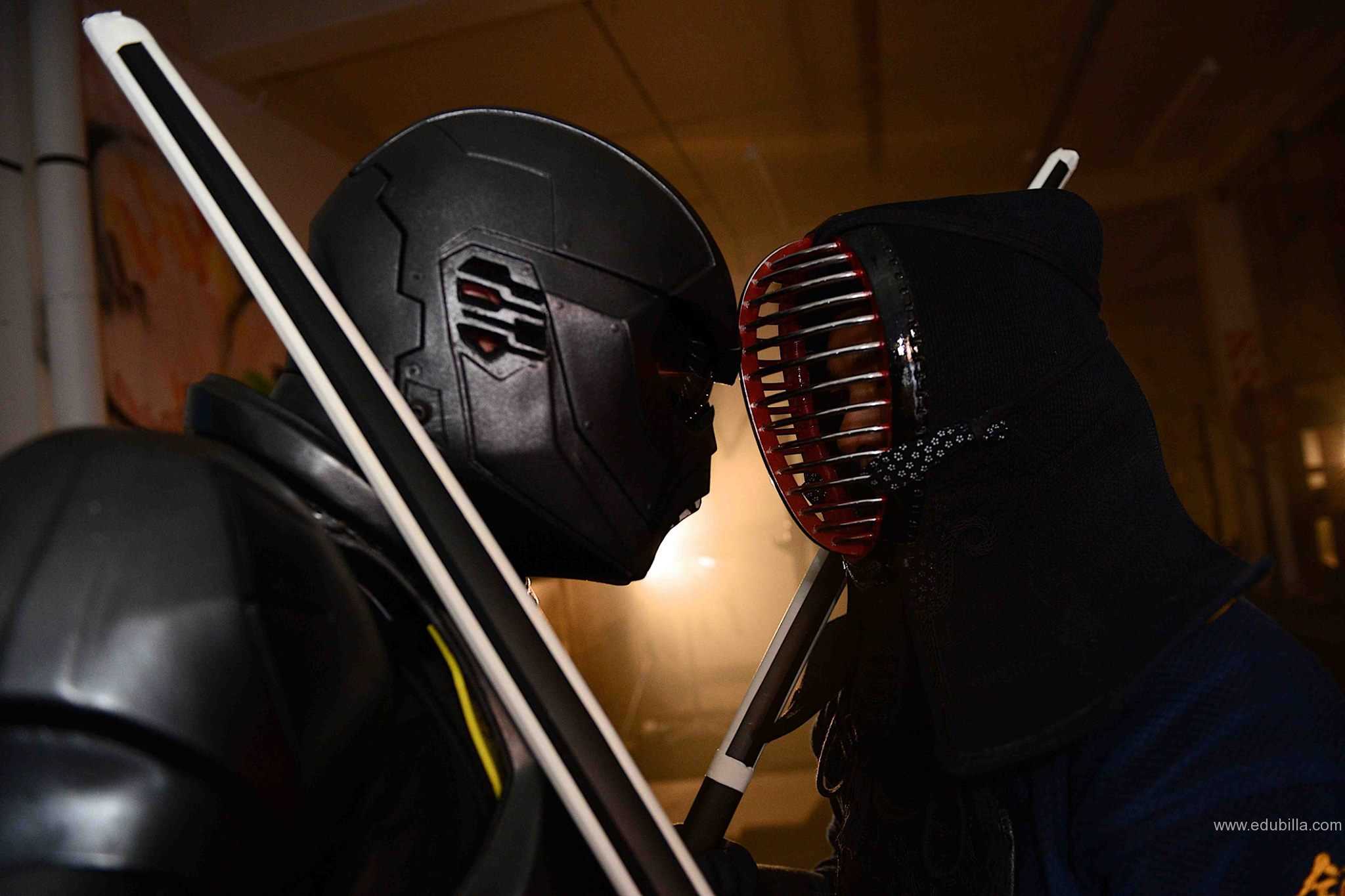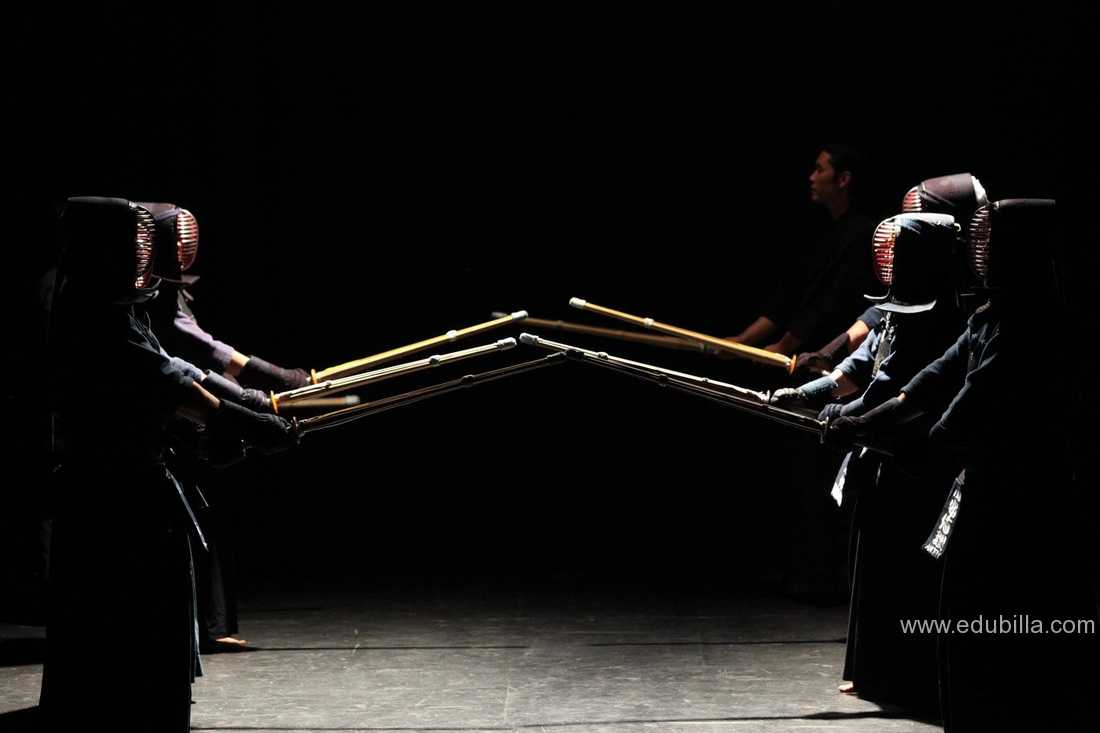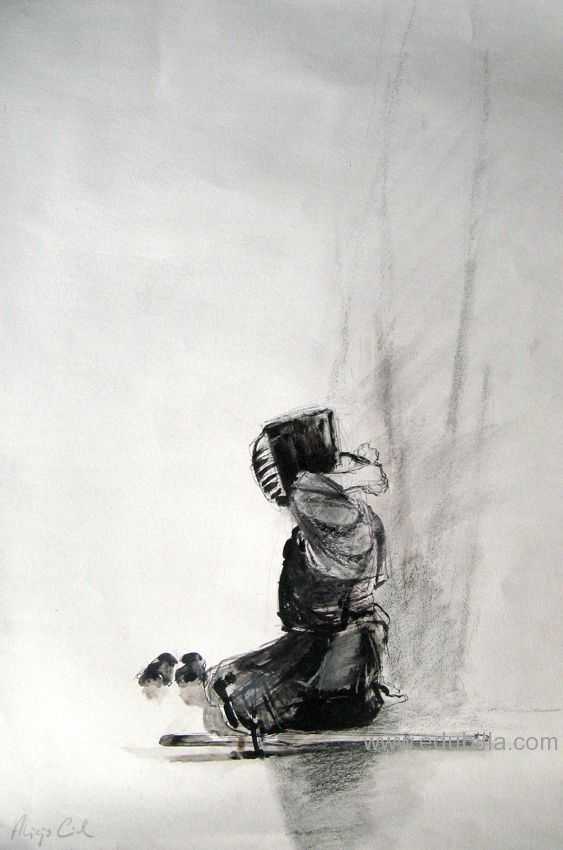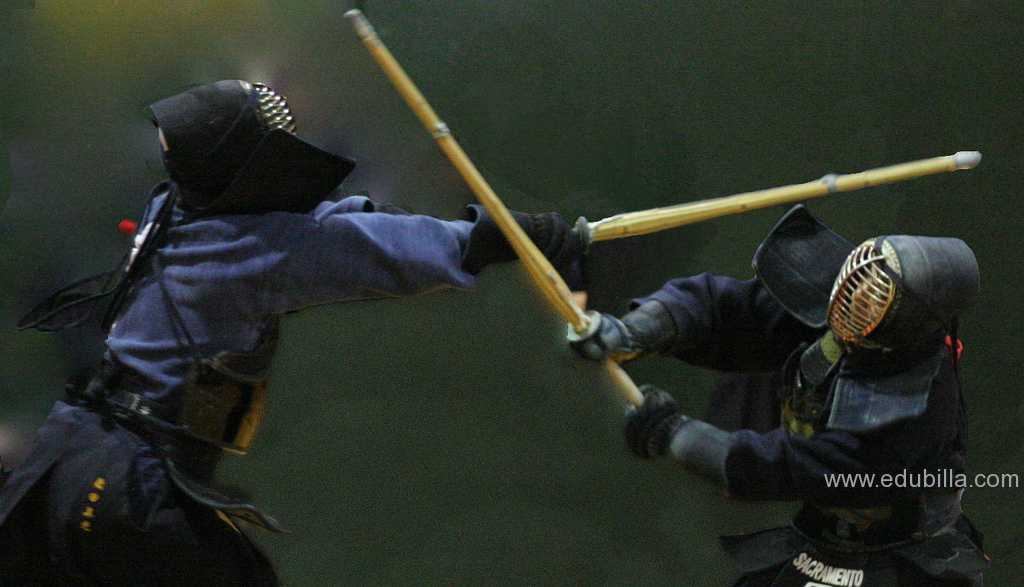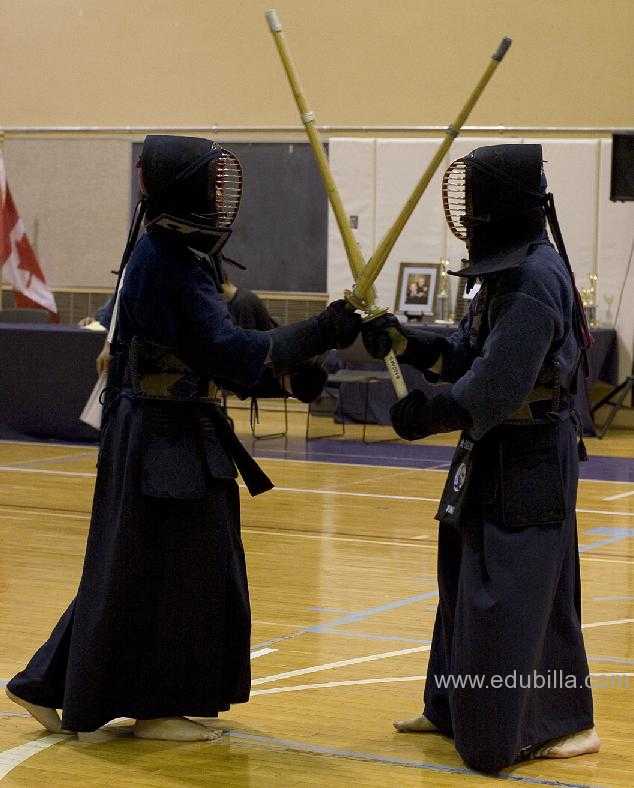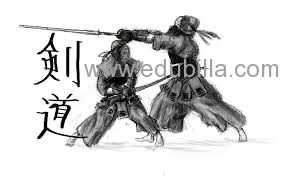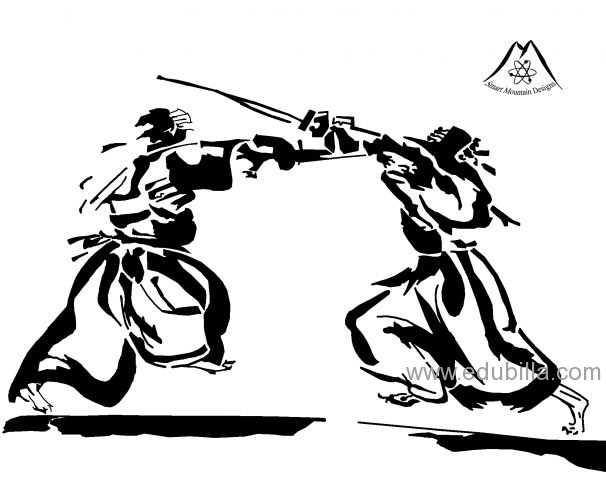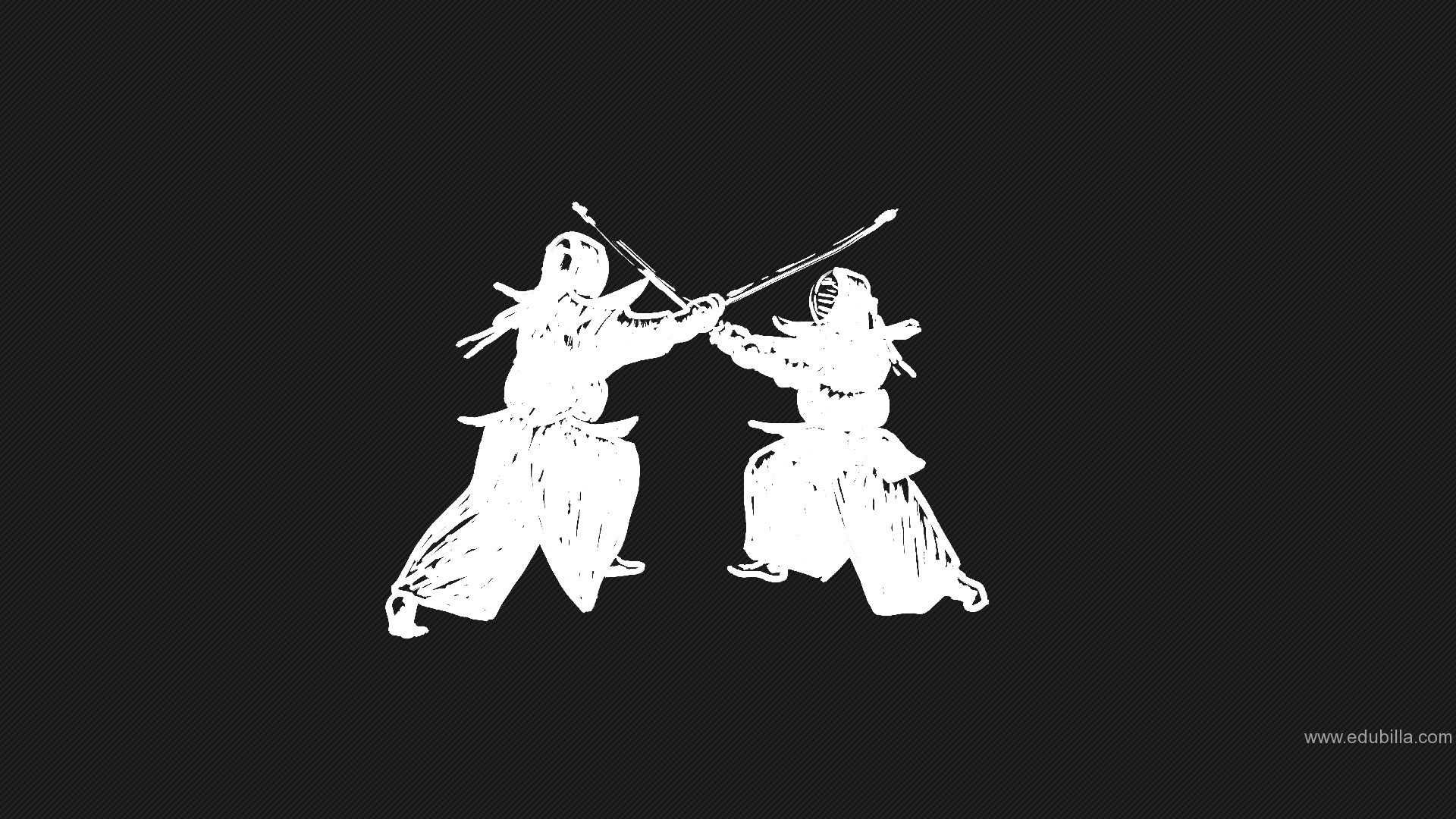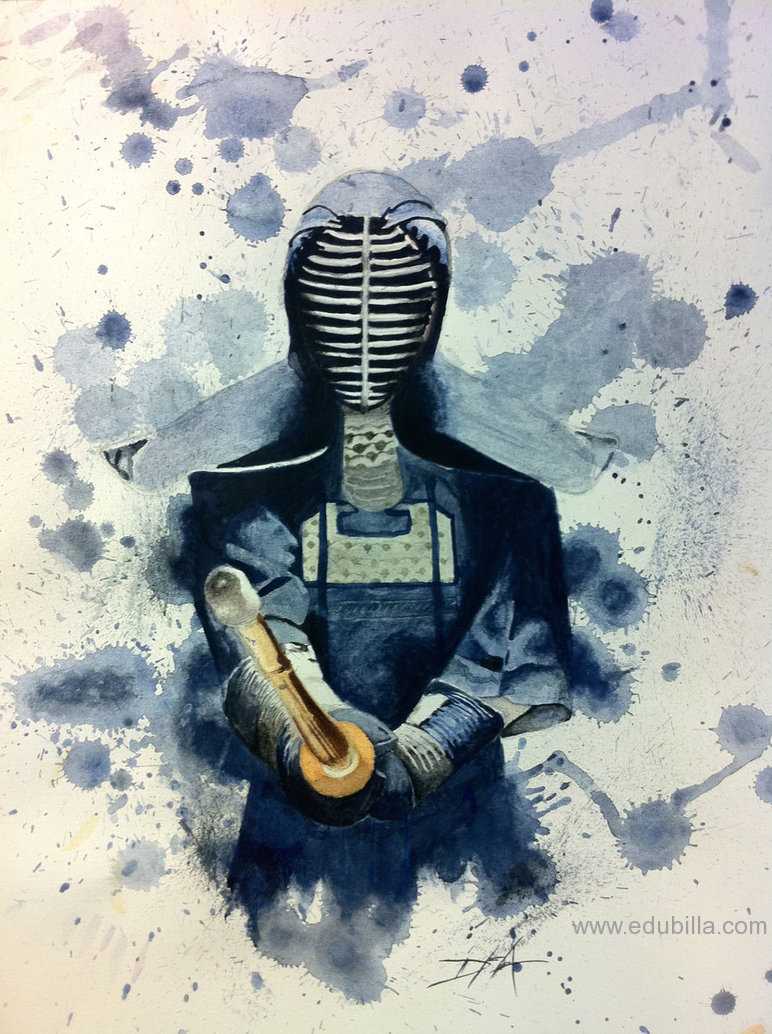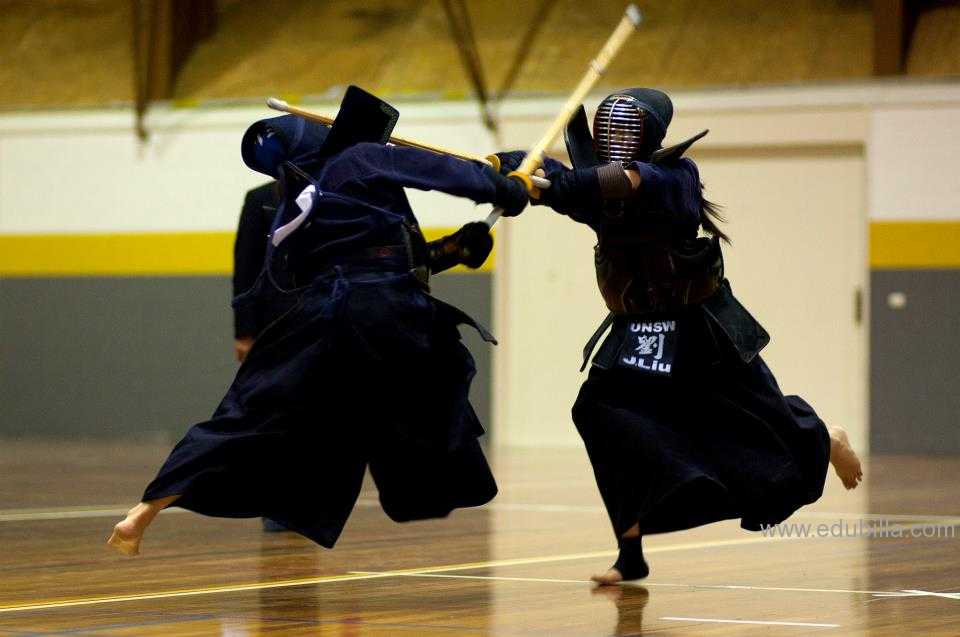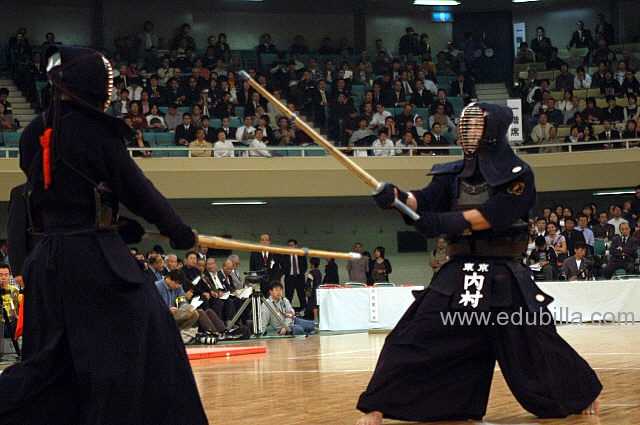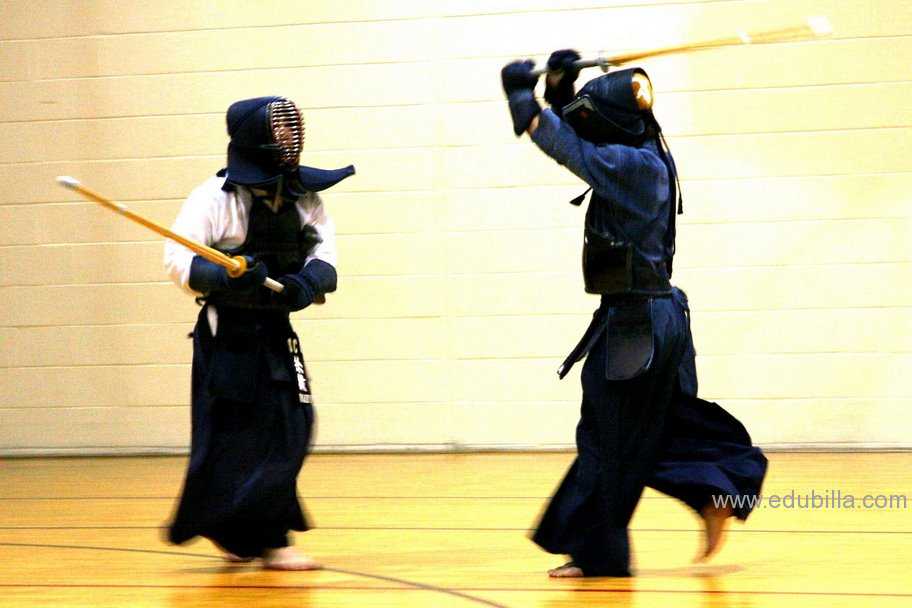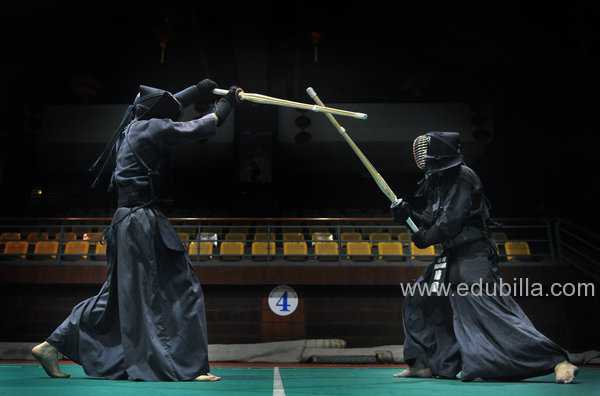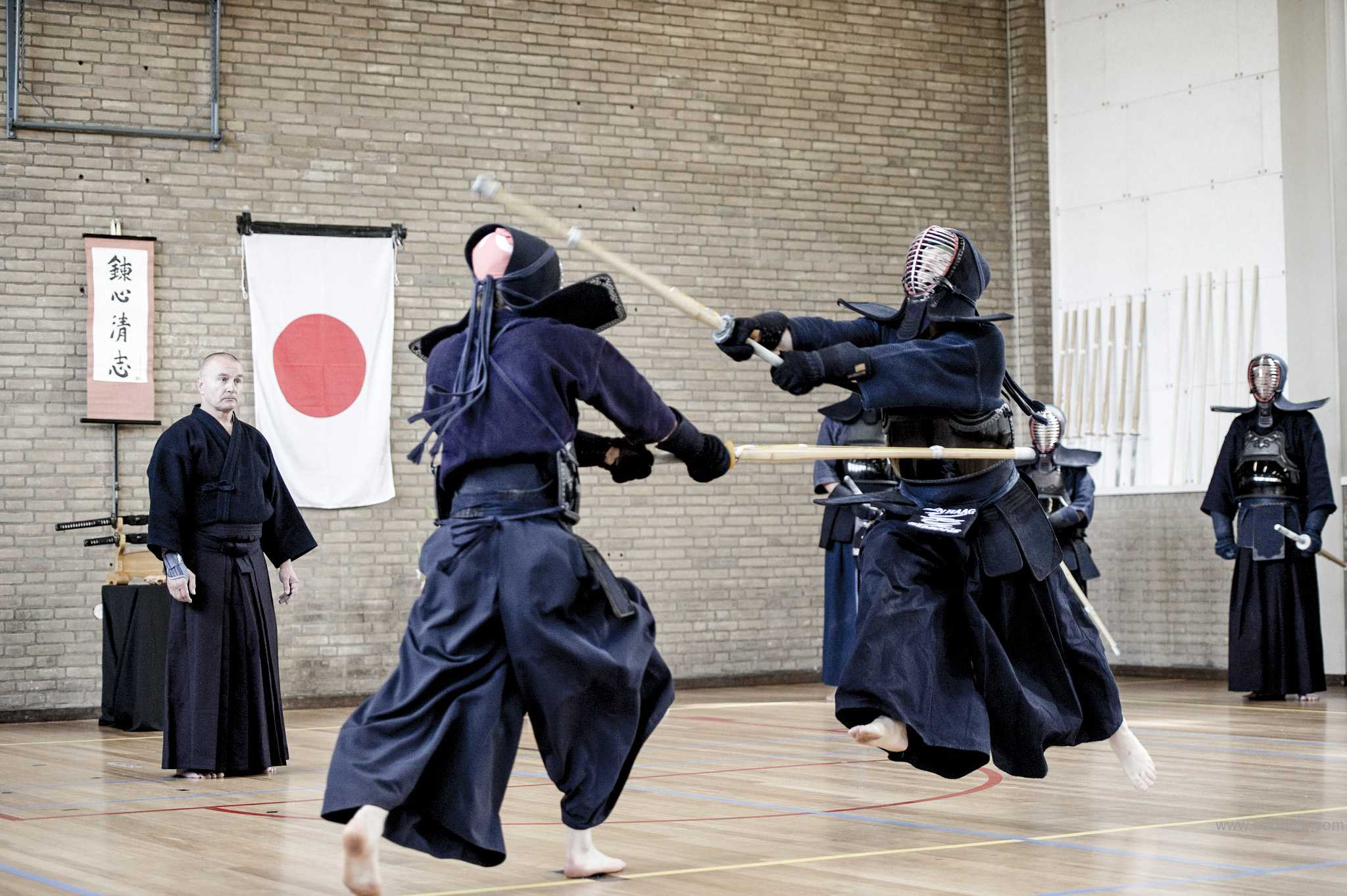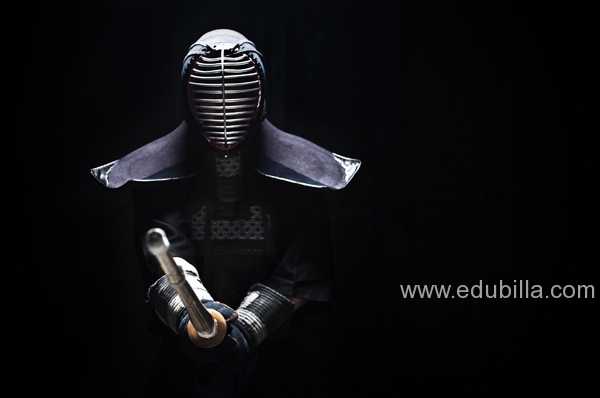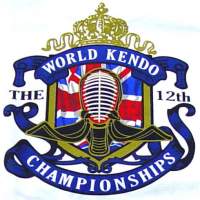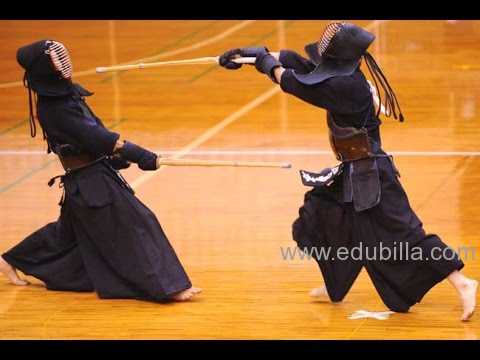
Overview Of Kendo
Kendo is a modern Japanese martial art, which descended from swordsmanship (kenjutsu) and uses bamboo swords (shinai) and protective armour (bogu). Today, it is widely practiced within Japan and many other nations across the world.
Kendo is an activity that combines martial arts practices and values with strenuous sport-like physical activity.
Techniques:
Techniques are divided into shikake-waza (to initiate a strike) and oji-waza (a response to an attempted strike).Kendoka who wish to use such techniques during practice or competitions, often practice each technique with a motodachi. This is a process that requires patience. First practising slowly and then as familiarity and confidence builds, the kendoka and motodachi increase the speed to match and competition level.
Shikake-waza:
These attack techniques are used to create suki in an opponent by initiating an attack, or strike boldly when your opponent has created a suki. Such techniques include:
Tobikomi-waza
This is a technique used when one's opponent has weak kisei (spirit, vigour) or when they yield a suki under pressure. Always hold kisei and strike quickly.
Hikibana-waza
Body and shinai will lose balance as you strike or when being attacked. This technique takes advantage of this to help execute a strike. A good example is Hikibana-kote, when a strike is made to an opponent's kote as they feel threatened and raise their kensen as you push forward.
Katsugi-waza
This provides a surprise attack, by lifting the shinai over your shoulder before striking. Here a skilful use of the kensen and spirited attack is crucial for effective katsugi-waza or luring your opponent into breaking his/her posture.
Nidan-waza
There are two types. The first is for moving to the next waza after a failed first strike, and the second holds your opponent's attention and posture to create the suki for a second strike. The former requires a continuous rhythm of correct strikes. The latter requires continuous execution of waza, to take advantage of your opponent's suki.
Harai-waza
This can be used if one's opponent's kamae has no suki when your opponent tries to attack. Your opponent's shinai is either knocked down from above or swept up from below with a resulting strike just when his/her kamae is broken.
Debana-waza
This technique involves striking your opponent as you realise he/she is about to strike. This is because their concentration will be on striking and their posture will have no flexibility to respond. Thus debana-waza is ideal. This can be to any part of your opponent's body, with valid strikes being: debana-men, debana-kote, and debana-tsuki.
Oji-waza:
These counter-attack techniques are performed by executing a strike after responding or avoiding an attempted strike by your opponent. This can also be achieved by inducing the opponent to attack, then employing one of the oji-waza.
Nuki-waza
Avoiding an attack from another, then instantly responding. Here, timing has to be correct. A response that is too slow or fast may not be effective. Therefore, close attention to an opponent's every move is required.
Suriage-waza
If struck by an opponent's shinai, this technique sweeps up their shinai in a rising-slide motion, with the right (ura) or left (omote) side of the shinai. Then strike in the direction of their shinai, or at the suki resulting from their composure's collapse. This technique needs to be smooth. That is, don't separate the rising-slide motion and the upward-sweeping motion or it will not be successful. Valid strikes include: men-suriage-men, kote-suriage-men, kote-suriage-kote, and tsuki-suriage-men.
Uchiotoshi-waza
This waza knocks an opponent's shinai to the right or left. This neutralises a potential strike and gives the ideal chance to strike as an opponent is off-balance. For success, an opponent's maai has to be correctly perceived and then one knocks down their shinai before their arm fully extends. Valid examples are: do-uchiotoshi-men and tsuki-uchiotoshi-men.
Kaeshi-waza
This technique is a response. As an opponent strikes, you parry their shinai with yours. Then flip over (turn over your hands) and strike their opposite side. Valid strikes include:men-kaeshi-men, men-kaeshi-kote, men-kaeshi-do, kote-kaeshi-men, kote-kaeshi-kote, and do-kaeshi-men.
Kendo Practice:
A Kendo practice is composed of many types of training. Each type has a different purpose for developing the Kendo student.
Kendo, like other martial arts requires discipline and a dedication to training. A new student begins with learning the basics such as: etiquette (reigi), different postures and footwork, and how to properly swing a sword. The student progresses through a series of skills preparing them to begin training with armor (bogu).
Once a student begins to practice in armor, a practice may be composed of any or all of the following types of practice and this will depend upon what the instructor's focus is at a particular time:
Kiri-Kaeshi: successively striking the left and right men, practice centering, distance, and proper cutting while building spirit and stamina.
Waza-Geiko: technique practice in which the student learns to use the many techniques of Kendo with a receiving partner.
Kakari-Geiko: short, intense, attack practice which teaches continuous alertness, the ability to attack no matter what has come before, as well as building spirit and stamina.
Ji-Geiko: sparring practice where the kendoist has a chance to try all that he or she has learned with a resisting partner.
Gokaku-Geiko: sparring practice between two kendoist of similar skill level.
Hikitate-Geiko: sparring practice where a senior kendoist guides a junior kendoist through practice.
Shiai-Geiko: competition matches which are judged on the basis of a person scoring valid cuts against an opponent.
Concept and purpose:
In 1975, the All Japan Kendo Federation (AJKF) developed then published "The Concept and Purpose of Kendo" which is reproduced below.
Concept:
- Kendo is a way to discipline the human character through the application of the principles of the katana.
Purpose:
- To mold the mind and body.
- To cultivate a vigorous spirit,
- And through correct and rigid training,
- To strive for improvement in the art of Kendo.
- To hold in esteem human courtesy and honor.
- To associate with others with sincerity.
- And to forever pursue the cultivation of oneself.
- Thus will one be able:
- To love one's country and society;
- To contribute to the development of culture;
- And to promote peace and prosperity among all peoples.
Game Rules
- A scorable point in a kendo competition (tai-kai) is defined as an accurate strike or thrust made onto a datotsu-bui of the opponent's kendo-gu with the shinai making contact at its datotsu-bu, the competitor displaying high spirits, correct posture and followed by zanshin.
- Datotsu-bui or point scoring targets in kendo are defined as:
- Men-bu, the top or sides of the head protector (sho-men and sayu-men).
- Kote-bu, a padded area of the right or left wrist protector (migi-kote and hidari-kote).
- Do-bu, an area of the right or left side of the armour that protects the torso (migi-do and hidari-do).
- Tsuki-bu, an area of the head protector in front of the throat (tsuki-dare).
- Datotsu-bu of the 'shinai' is the forward, or blade side (jin-bu) of the top third (monouchi) of the shinai.
- Zanshin, or continuation of awareness, must be present and shown throughout the execution of the strike, and the kendoka must be mentally and physically ready to attack again.
- In competition, there are usually three referees ( shinpan). Each referee holds a red flag and a white flag in opposing hands. To award a point, a referee raises the flag corresponding to the colour of the ribbon worn by the scoring competitor. Usually at least two referees must agree for a point to be awarded. The match continues until a pronouncement of the point that has been scored.
- Kendo competitions are usually a three-point match. The first competitor to score two points, therefore wins the match. If the time limit is reached and only one competitor has a point, that competitor wins.
In the case of a tie, there are several options:
- Hiki-wake: The match is declared a draw.
- Encho: The match is continued until either competitor scores a point.
- Hantei: The victor is decided by the referees. The three referees vote for victor by each raising one of their respective flags simultaneously.
Equipments Need For Kendo
Kendo is practiced wearing a traditional Japanese style of clothing, protective armour (bogu) and using one or, less commonly, two shinai
- Shinai
- Bokuto
- Men
- Do
- Tare
- Kote
- Armour and clothing components
Equipment:
The shinai is meant to represent a Japanese sword (katana) and is made up of four bamboo slats, which are held together by leather fittings. A modern variation of a shinai with carbon fiber reinforced resin slats is also used.
Kendoka also use hard wooden swords (bokuto) to practice kata.
Kendo employs strikes involving both one edge and the tip of the shinai or bokuto.
Protective armour is worn to protect specified target areas on the head, arms and body. The head is protected by a stylised helmet, called men , with a metal grille to protect the face, a series of hard leather and fabric flaps to protect the throat, and padded fabric flaps to protect the side of the neck and shoulders. The forearms, wrists, and hands are protected by long, thickly padded fabric gloves called kote . The torso is protected by a breastplate , while the waist and groin area is protected by the tare , consisting of three thick vertical fabric flaps or faulds.
Clothing:
The clothing worn under the bogu comprise a jacket (kendogi or keikogi) and hakama, a garment separated in the middle to form two wide trouser legs.
A cotton towel is wrapped around the head, under the men, to absorb perspiration and provide a base for the men to fit comfortably.
History Of Kendo
Swordsmen in Japan established schools of kenjutsu (the ancestor of kendo), which continued for centuries and which form the basis of kendo practice today.The formal kendo exercises known as kata were developed several centuries ago as kenjutsu practice for warriors. They are still studied today, in a modified form.
The introduction of bamboo practice swords (shinai) and armour (bogu) to sword training is attributed to Naganuma Shirozaemon Kunisato during the Shotoku Era (1711–1715). Naganuma developed the use of bogu and established a training method using the shinai.
The beginnings
The first accounts of the art of sword fighting is recorded about 400 CE and refer to Tachikaki (tachi means sword, and kaki is the form of drawing). By using a Bokken (solid wooden sword), that at this time was a straight blade, attack and drawing were practised.
During the Nara period (710-794), when Nara was the capital of Japan, the art of Tachikaki was replaced by Tachiuchi (match of swords), which was a new form of combat-of-arms.
When the capital in 794 was moved from Nara to Kyoto, at that time named Heian-kyo (city of peace and tranquillity), the art of Kendo started to developed slowly. This was a period of peace and ease, so Samurai that wanted to keep their skills or perfect their sword techniques searched for skilful kendo instructors. As many of the samurais were master swordsmen, they could start a fencing school supported by a warlord of an Uji (clan). But still the bow was the main weapon of the samurai of the Nara and Heian periods.
Chinese introduced straight metal swords to Japan around 589-907 AD Chinese Sui or Tang dynasties
HEIAN Era - 794-1184 AD
The first domestically forged swords with the original Japanese design of slightly arched blades and raised ridges were called Shinogi. The first documented use of the curved Japanese swords used in battle was by a samurai clan, known to attack whil on horse back in the south of Japan.
KAMAKURA Era - 1200-1299 AD
The samurai sword continued to rapidly improve in sword making production. Battle tested sword techniques improve dramatically.
MUROMACHI Era - 1392-1573 AD
100 year period of civil war and anarchy accelerates the number of Kenjutsu (sword techniques) schools (ryu) opening across Japan and refining the dissemination of advanced sword-handling and sword smithing techniques.
A new sword casting method called “Tatarafuki” using high grade iron sand from riverbeds was developed.
Lightly armored samurai became favored over being heavily armored in battle.
EDO Era - 1603-1867 AD
Relative peace in Japan.
Major writings about the kendo were published:
- “The Book of Five Rings” by Miyamoto Musashi
- “The Unfettered Mind” by the Priest Takuan
- “Sword and Zen” written for the Shogun Tokugawa Iemitsu
- “The Life-giving Sword” by Yagyu Munenori
- The goal of kendo changed from of “destroying the enemy” to a goal of character development, moral and social justice.
- First early types of kendo bogu emerges improving the level of competition, training and reducing injuries.
MEJI Era - 1868-1911 AD
Samurai Class dissolved sending a whole class of society searching for a means to make a living as farmers, merchants, civil servants or what ever they could find.
TAISHO Era - 1912-1926 AD
Compilation of the best sword techniques used to create the Nippon Kendo Kata.
The term Kendo “way of the sword” officially adapted to be used instead of Kenjustu (sword techniques) The shinai (bamboo sword) accepted as the alternative to the Japanese sword.
MODERN
Kendo outlawed after the second world war, despite this setback it later become adapted as part of the Japanese Phys. Ed. school curriculum, and part of Japanese police training.
All Japan Kendo Federation (IKF) established and the First World Kendo Championships (WKC) in 1970.
Origin Of Kendo
It is difficult to precisely say when and how Kendo originated. Kendo was not created nor developed by a single person or even a group of people. It was developed over a very long period of time from real combat and sword fighting situations.
Origin of sword:
The sword was introduced to Japan from the Continent around the 2nd century BC. They say that the sword was originally a ritual colored object which symbolized the authority of its owner rather than a weapon. At that time, the catapult and bow were used for hunting or tribal warfare. However, the sword gradually became used for fighting through continuous group conflicts in the course of national unification. By the 7-8th century, the sword was being forged domestically.
After the 9th century, as the Bushi class was established, the prototype of the Nihon-to (the Japanese sword) was formed. Various sword fighting techniques as well as forging techniques had been developed. However, on the battlefield, swords that were longer than 6 feet and spears were the main weapons until the 14th century.
The kendo schools evolve:
The many wars of the Ashikaga Shogunate (1333-1568) made that the art of fencing, Kenjutsu, got an upsurge as the art of sword warfare became necessary for the samurai to master sword fighting. In this period the first Kenjutsu Ryu (school) were founded and the most famous were Nagahide Chujo (1380), Bunguro Hukida (1437), Choisai Iizasa (1488) and In-Ei (1521). There were two distinct areas of Ryu: Sen-ha Kenjutsu, which concentrated on sword techniques to be used in battle; and Ryu-ha Kenjutsu, which also included a more scientific approach, also to the art of war and war strategy.
The earliest kendo school of which there is a record, is the Nen-ryu founded in 1350 by Sanashirio Yoshimoto. If Yoshimoto originated the style is not for sure, this particular style however was taught until the 18th century by the Higuchi family, but has now disappeared. Also if this was the first school in existence is not proofed as every Damiyo (lord) has a fencing master in his castle.
Modern Kendo:
After World War II, Kendo suffered a major setback. Kendo was regarded undemocratic by the general headquarters of the occupation forces and was officially banned in public. In 1957, due in part to the efforts of many Kendo enthusiasts, Kendo was restored. In the same year, the All Japan Kendo Federation was founded. Kendo grew into a national pastime again. However, it was now more of a martial art concerned primarily with the development of mind and body with the purpose of forging a better life rather than a method for taking life using a sword as it was before.
Since the establishment of the International Kendo Federation in 1970, Kendo has become popular even outside of Japan. People in countries such as Canada, Brazil, England, France, Germany, Korea, the United States and many others have begun to practice Kendo. There are many more federations existing internationally as people in other countries take increasing interest in Kendo. Modern Kendo is the result of many changes, from a purely fighting art, to an all encompassing martial art.
Governing Bodies
International Kendo Federation (FIK):
The International Kendo Federation (FIK) was founded in 1970. It is an international federation of national and regional kendo associations.
The FIK is a non-governmental organisation and its aim is to promote and popularise kendo, iaido and jodo.Seventeen national or regional federations were the founding affiliates. The number of countries affiliated has increased over the years and in May 2015 the total had grown to 57.
The FIK was accepted as a member of the General Association of International Sports Federations (GAISF) in April 2006 and thus recognised as the peak world federation for kendo. As a consequence, the previous acronym of IKF was altered to FIK.The GAISF has been renamed as SportAccord.
The head office of FIK is located in the All Japan Kendo Federation building in Minato-ku, Tokyo.
Anti-doping:
As member of SportAccord the International Kendo Federation is supporting in managing of anti-doping programmes.These anti-doping programmes are fully compliant with the World Anti-Doping Code.
To Visit FIK Click Here.
European Kendo Federation (EKF):
The European Kendo Federation (EKF) is the member of the International Kendo Federation which is responsible for the European zone. The EKF is the overall organization for the Japanese martial arts Kendo, Jodo and Iaido in Europe.
Member Countries:
The following is a partial list of countries that are members of the EFK.
- Austria The Austrian Kendo Association was founded in 1985.
- Belgium Kendo is promoted by the A.B.K.F., All Belgium Kendo Federation in Belgium.
- Bulgaria Kendo, iaido and jodo are promoted by the B.K.F., Bulgarian Kendo Federation in Bulgaria.
- Croatia Kendo is promoted by the H.K.S., Hrvatski Kendo Savez in Croatia.
- Czech Republic Kendo is promoted by the C.K.F., Czech Kendo Federation in Czech Republic.
- Denmark Danish Kendo Federation (Dansk Kendo Forbund,DKF)
- Finland Kendo is promoted by the Finnish Kendo Association in Finland.
- France After the end of World War II, many masters of kendo visited France and introduced kendo in the 1950s. The first French kendo championship was held in 1959.Comité National de Kendo
- Germany Deutscher Kendobund e.V
- Hungary Kendo is promoted by the Hungarian Kendo Federation (HKF) in Hungary.
- Italy Kendo is promoted by the C.I.K., Confederazione Italiana Kendo.
- Ireland Kendo is promoted by Kendo Na h-Éireann, Irish Kendo Federation.
- Luxembourg Shobukai Kendo Luxembourg (SKL)
- Macedonia Kendo is promoted by the Macedonian Kendo - Iaido Federation (MKIF)
- Malta Kendo is promoted by the Maltese Kendo Federation
- Netherlands Kendo is promoted by the NKR, Dutch Kendo Renmei.
- Poland Kendo is promoted by Polish Kendo Federation.
- Portugal Kendo is promoted by Associação Portuguesa de Kendo (APK), which is affiliated with the European Kendo Federation and the International Kendo Federation.
- Russia Kendo is promoted by Russian Kendo Federation.
- Serbia Kendo is promoted by the Serbian Kendo Federation in Serbia.
- Slovakia Kendo is promoted by the Slovenská kendo federácia in Slovak republic.
- Spain Kendo is promoted by the Real Federacion Española de Judo y Deportes Asociados in Spain.
- Sweden Kendo is promoted by the Swedish Kendo Federation.
- Switzerland The Swiss Kendo & Iaido SJV/ASJ was founded in 1967.
- Turkey Kendo is promoted by Turkish Kendo Association in Turkey. Dojos are Ankara Kendo Iaido Association in Ankara, Katsuninkan Istanbul, Bogazici Kendo Club and Istanbul Kendo Club in Istanbul. A community site Kendo-Turkiye represents Turkish Kenshi.
- United Kingdom Kendo was introduced to the UK by R.A. Lidstone (a western fencing master). The organisation that promotes Kendo in the UK, the British Kendo Association, which is affiliated with the International Kendo Federation.
- Greece, Kendo in Greece is promoted by the Hellenic Kendo Iaido Naginata Federation HKINF, (www.eokin.gr)
To Visit EKF Click Here.
Awards Related To Kendo
- Sir Frank Bowden
- Premier Cup
- Watchet Grading
- University Taikai Kyu Grade Women
- In Dojo Grading
- Mumeishi grading
- Kobayashi Women's Cup Fighting Spirit
- Fighting Spirit Award
Kendo Club at University of Washington - Awards
2014
- 2014 Intercollegiate Taikai
- 2014 Highline Taikai
2013
- University of Victoria Taikai
- 51st Annual Steveston Taikai
- 36th Anniversary Highline Mudansha Cup
- 37th University of Washington Taikai
- 48th Vancouver Taikai
- 2013 PNKF Taikai
- 2013 Kent Taikai
2012
- 50th Annual Steveston Taikai
- 35th Anniversary Highline Mudansha Cup
- 16th Harvard Shoryuhai Intercollegiate Kendo Taikai
- 36th University of Washington Taikai
- 38th Annual PNFK Taikai
- 16th Annual Kent Taikai
-Michael Jordan




